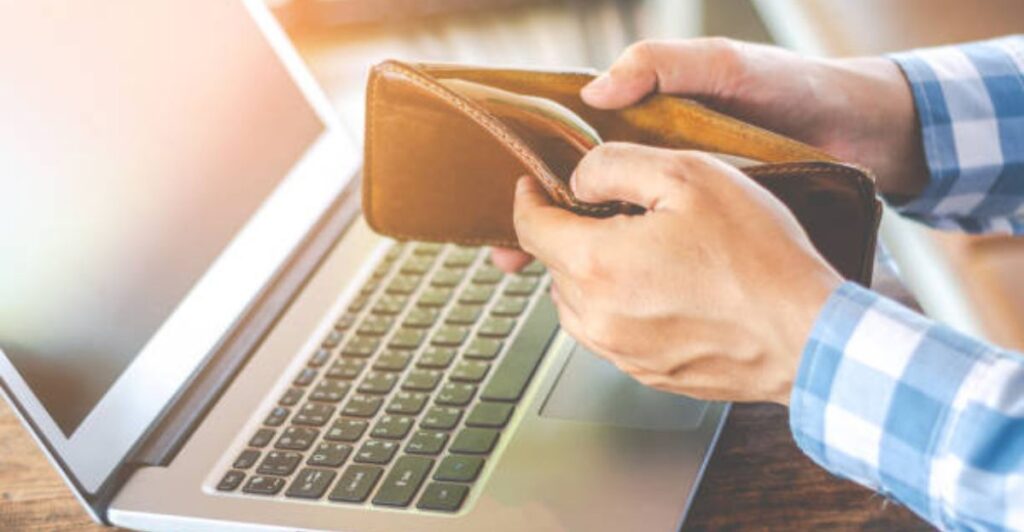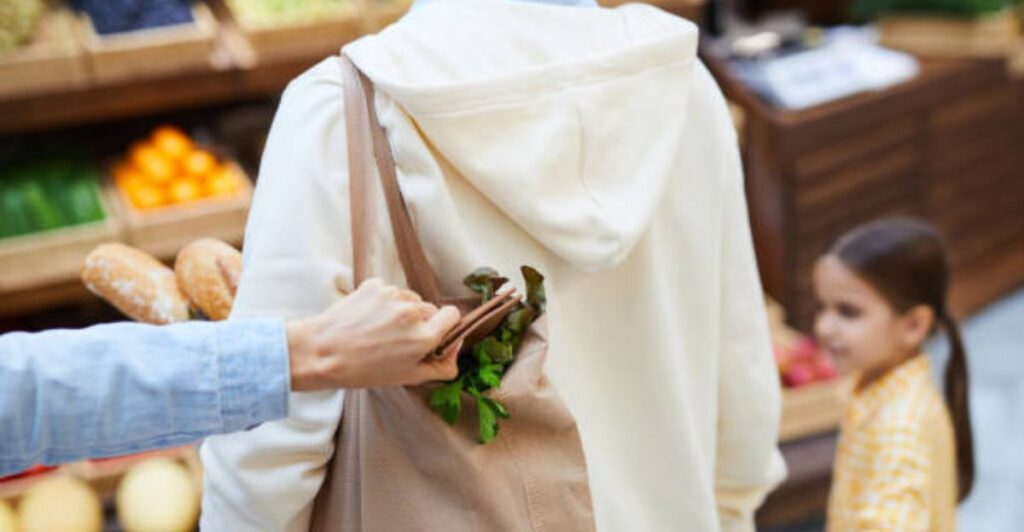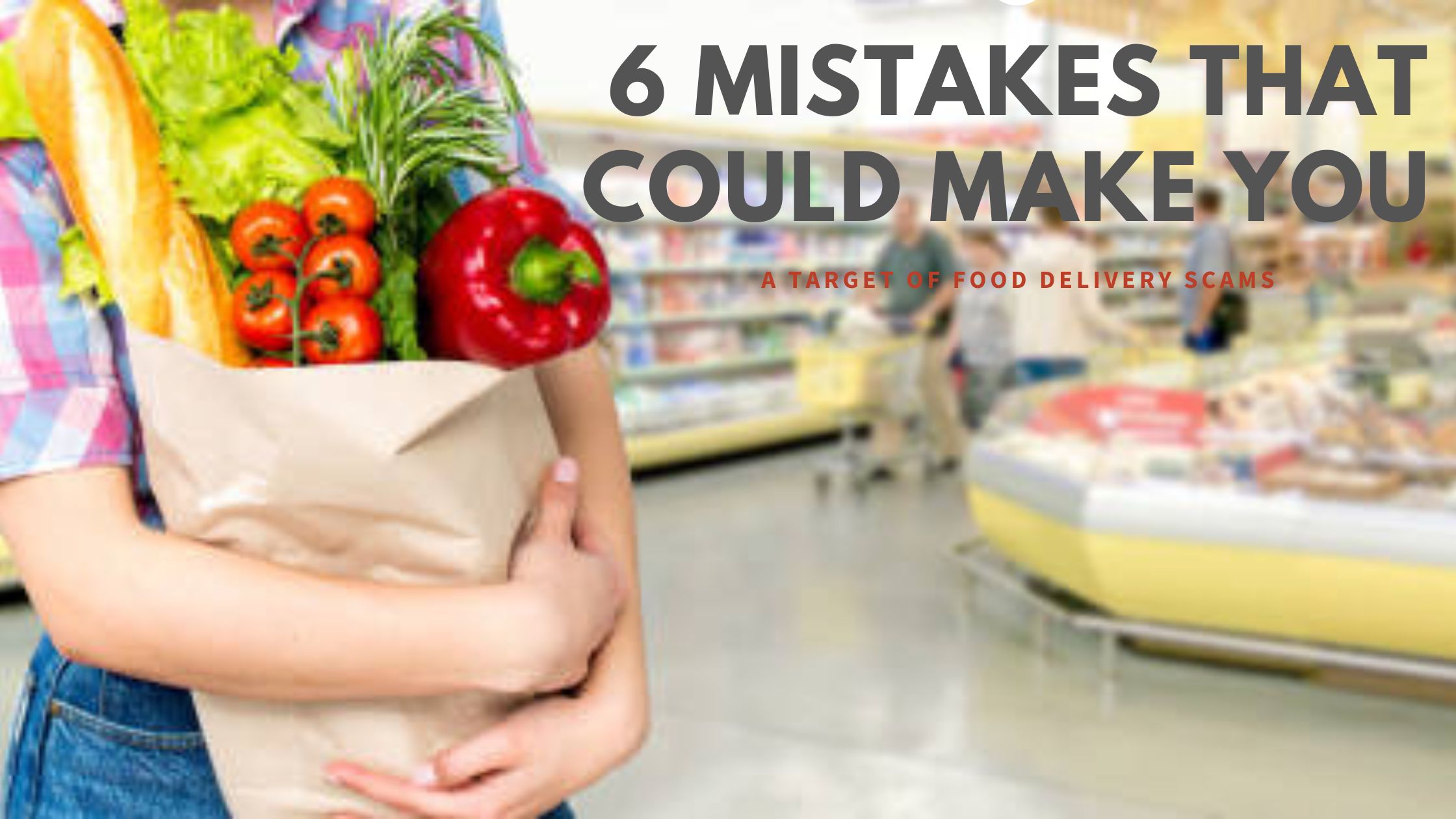Introduction
6 Mistakes That Could Make You a Target of Food Delivery Scams
With the explosive growth of online food delivery services, more people are enjoying the ease of ordering meals from their phones. But with convenience comes risk—food delivery scams are on the rise, and many users unknowingly make common mistakes that expose them to fraud. In this article, we’ll explore 6 major mistakes that could make you a target and provide actionable tips to help you stay safe while ordering food online..
🚫 6 Mistakes That Could Make You a Target of Food Delivery Scams

1. Downloading Fake or Unofficial Apps
Many users fall for lookalike apps from third-party sources that steal personal and payment information.
Avoid it by:
- Only downloading apps from official stores like Google Play or Apple App Store.
- Checking developer information and app reviews.
2. Clicking on Phishing Links
Fake texts or emails pretending to be from food delivery services can trick you into giving away login credentials.
Avoid it by:
- Not clicking on suspicious links.
- Always logging in directly through the app or official website.
3. Using Weak or Repetitive Passwords
Using the same password across multiple apps or simple passwords like “123456” makes it easy for scammers to hack your account.
Avoid it by:
- Creating strong, unique passwords.
- Enabling two-factor authentication (2FA) if available.
4. Accepting Delivery Without Verifying the Driver
Some scammers pose as delivery personnel to steal food—or worse, personal data.
Avoid it by:
- Always checking the driver’s name, photo, and vehicle details on the app before accepting the delivery.
5. Paying in Cash Without Receipts
Scammers may ask for extra payments upon delivery or charge more than what’s in the app.
Avoid it by:
- Using secure in-app payment methods whenever possible.
- Refusing to pay unverified additional charges.
6. Ignoring App or Device Updates
Outdated apps or operating systems may lack the latest security protections.
Avoid it by:
- Keeping your phone and apps up to date to benefit from security patches and fraud prevention features.
🌟 Benefits of Avoiding These Mistakes

By steering clear of these risky behaviors, you:
- Protect your personal and financial data
- Prevent unauthorized charges or account takeovers
- Build confidence in using online food delivery apps
- Reduce the chance of identity theft
- Ensure a safer and smoother ordering experience
🔥 Trending Now: How the Industry Is Fighting Back
Food delivery companies are adopting modern technologies to protect users, such as:
- AI-powered fraud detection to flag suspicious transactions
- Biometric login systems like fingerprint or facial recognition
- Live GPS tracking to verify delivery driver identities
- Multi-layered account security including OTPs and two-step verification
- Automated fraud refund protection that detects misuse of return/refund policies
Staying up to date on these trends can empower you to use these platforms more wisely.
✅ Suggestions to Stay Safe from Scams

Here are practical steps you can take today:
- Enable app alerts and transaction notifications
- Use biometric login or 2FA for added security
- Monitor your order history regularly
- Educate family members, especially children and seniors
- Avoid sharing personal details with delivery drivers
- Review your receipt and report any overcharges immediately
📝 Conclusion
The convenience of food delivery services shouldn’t come at the cost of your safety. Avoiding just a few common mistakes—like downloading unofficial apps, reusing passwords, or paying extra cash—can dramatically lower your risk of falling victim to scams. Stay alert, follow best practices, and enjoy your meals with peace of mind.
📚 References
- Federal Trade Commission – Online Scams
- Better Business Bureau – Food Delivery Scams
- Consumer Reports – Safe Use of Delivery Apps
- National Cyber Security Centre – Personal Device Safety
❓ FAQs
1. What’s the most common food delivery scam?
The most common food delivery scam is phishing, where scammers impersonate food delivery services to trick users into revealing personal or financial information.
Here’s how it usually works:
🔍 How the Scam Happens:
- You receive a fake email or text message that looks like it’s from a trusted delivery service (like Uber Eats, DoorDash, or Grubhub).
- The message may claim:
- Your order failed and needs payment confirmation.
- You need to verify your account.
- A coupon or refund is waiting for you.
- It includes a link to a fake website designed to steal your login credentials or credit card information.
🎯 Why It Works:
- The messages appear urgent or time-sensitive.
- They closely mimic real branding (logos, colors, wording).
- Many people are used to fast, app-based interactions and don’t stop to double-check.
✅ How to Avoid It:
- Never click links in unexpected emails or texts.
- Go directly to the food delivery app or website to check your order status.
- Use two-factor authentication for added protection.
- Report suspicious messages to the delivery service’s support team.
2. Are food delivery apps secure?
Yes, most food delivery apps are secure, but only if used correctly. Major platforms like Uber Eats, DoorDash, Grubhub, Zomato, and others invest heavily in security to protect user data. However, even the most secure app can be compromised if users make common safety mistakes.
✅ Security Features Most Apps Offer:
1. Encryption
They use HTTPS and end-to-end encryption to protect your personal and payment data during transmission.
2. Two-Factor Authentication (2FA)
Some apps offer 2FA, which adds a layer of protection by requiring a second verification step during login.
3. Real-Time Order Tracking
Tracking your delivery in real-time adds a layer of transparency and helps prevent impersonation scams.
4. Driver Verification
Most platforms provide the name, profile photo, and vehicle details of the delivery person so you can verify their identity.
5. Fraud Monitoring
Advanced algorithms monitor unusual behavior (like multiple orders from the same IP or location) and flag suspicious activity.
⚠️ Risks Still Exist If You’re Not Cautious:
Even secure apps can be exploited if you:
- Use weak or repeated passwords
- Download apps from unofficial sources
- Ignore phishing attempts
- Give sensitive info to fake customer support agents
🛡️ How to Use Food Delivery Apps Safely:
- Only download apps from the official Google Play Store or Apple App Store
- Turn on 2FA if available
- Use strong, unique passwords
- Avoid public Wi-Fi when placing orders
- Never share personal or financial info through email or SMS
- Regularly review your order and transaction history
Bottom Line:
Food delivery apps are generally secure, but your own actions play a huge role in staying protected. Treat them like you would any online financial service—with caution, awareness, and strong digital hygiene.
3. Can I get a refund if I’ve been scammed?
Yes, you may be able to get a refund if you’ve been scammed while using a food delivery service—but it depends on how quickly you act and who you report it to.
✅ Here’s What You Should Do Immediately:
1. Report the Scam to the Delivery App
- Use the app’s customer support or help center to report the fraudulent activity.
- Most major platforms like Uber Eats, DoorDash, and Grubhub have fraud protection policies and may issue a refund if the case is valid.
2. Contact Your Bank or Credit Card Company
- If your card was charged for a fake or unauthorized order, report it as fraudulent.
- You may be able to file a chargeback to reverse the payment.
3. Freeze or Lock Your Card Temporarily
- If you suspect a breach, use your banking app to lock the card to prevent further charges.
4. Change Your Passwords Immediately
- Secure your delivery app account and associated email with a new, strong password.
- Turn on two-factor authentication (2FA) if available.
🔁 What Refunds Are Typically Approved For?
You might be eligible for a refund if:
- Your food never arrived
- The delivery was made to the wrong address
- You were charged extra fees without your consent
- Your account was used without your knowledge
- You were tricked by a phishing scam that led to unauthorized orders
❗ When Refunds May Be Denied:
- If you shared your password or security info with someone else
- If you failed to report the issue in a timely manner
- If the app determines it was not a system error or verified fraud
📞 Who Else to Contact (If Necessary):
- Federal Trade Commission (FTC) – for U.S. users: https://reportfraud.ftc.gov
- Better Business Bureau (BBB) – to lodge complaints about the company
- Local consumer protection agency – for further legal support
Yes, you can often get a refund if you’ve been scammed—but acting fast and reporting through official channels is critical. The sooner you respond, the better your chances of recovering your money.
4. Is it safe to pay in cash on delivery?
Paying in cash on delivery (COD) can be convenient, but it’s not the safest option when ordering food online. While many food delivery services still offer it—especially in regions where digital payment adoption is lower—it comes with several risks that digital payments help you avoid.
⚠️ Risks of Paying Cash on Delivery
1. Fake Delivery Scams
Scammers may impersonate delivery drivers and ask for payment for orders you never placed.
2. Overcharging or Fake Fees
Some fraudsters may demand extra money by claiming there’s a “service fee” or “distance charge” not shown in the app.
3. No Proof of Transaction
With cash, there’s no digital receipt—making it hard to dispute overcharges or prove you paid.
4. Safety Concerns
Carrying cash or opening your door to pay in cash can make you vulnerable to theft or physical scams, especially at night.
✅ Benefits of Using Digital Payment Instead
- Secure and traceable transactions
- Automatic receipts and order history
- Easier refund processing in case of fraud or non-delivery
- Contactless delivery, which is safer and more hygienic
🛡️ If You Must Use Cash on Delivery:
- Verify the delivery driver’s identity using the app (photo, name, vehicle).
- Have the exact amount ready to avoid interaction and delays.
- Avoid paying for anything extra not listed in your official order summary.
- Use well-lit areas and avoid accepting deliveries late at night if possible.
While cash on delivery is not inherently unsafe, it’s less secure than digital payment methods and makes fraud harder to trace. For the safest experience, it’s best to use in-app payments via card, mobile wallets, or UPI, especially if you frequently order food online.
5. How can I report a food delivery scam?
If you suspect you’ve been targeted or affected by a food delivery scam, it’s important to act quickly and report it to the right places to protect your money, personal information, and others from being scammed too.
✅ 1. Report to the Food Delivery Platform
Most major food delivery apps have dedicated support for fraud or suspicious activity:
- Uber Eats: Go to the app → “Help” → Select the relevant order → “I had an issue” → Choose “My account or payment was charged incorrectly”
- DoorDash: Use the in-app support chat or visit help.doordash.com
- Grubhub: Contact support via the app or at grubhub.com/help
- Zomato / Swiggy (India): Open the app → “Support” or “Help Center” in the order details section
📌 What to Include When Reporting:
- Order ID or receipt number
- Date and time of the incident
- Screenshots of messages or suspicious activity
- Description of what happened
✅ 2. Contact Your Bank or Payment Provider
If you were charged for something you didn’t order or your card was misused:
- Report unauthorized charges immediately
- Request to block or freeze your card
- File a chargeback or dispute if necessary
Banks often have fraud protection policies and can help you recover your funds.
✅ 3. Report to National Consumer Authorities
If you’re in the United States:
- FTC (Federal Trade Commission):
https://reportfraud.ftc.gov - Better Business Bureau (BBB):
https://www.bbb.org/
If you’re in the UK:
- Action Fraud:
https://www.actionfraud.police.uk/
If you’re in India:
- Cyber Crime Reporting Portal:
https://cybercrime.gov.in/
🛡️ Additional Tips:
- Change your passwords if your account was compromised
- Enable two-factor authentication (2FA)
- Monitor bank statements for suspicious activity
- Warn others—leave a review or share your experience on community forums
Reporting a scam immediately increases your chance of a refund, helps prevent further fraud, and supports enforcement efforts. Always use official support channels and never share personal info through third-party links or calls.

